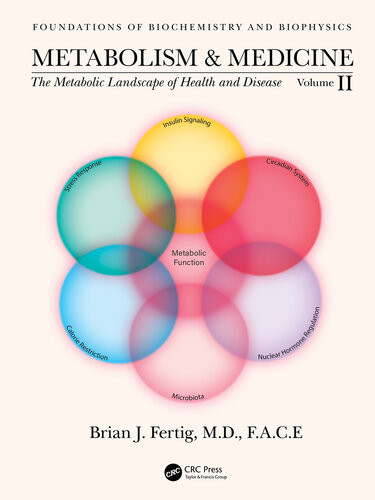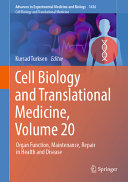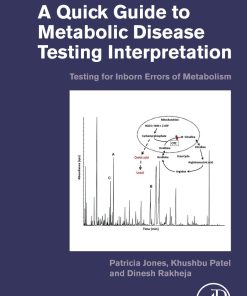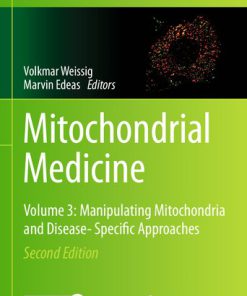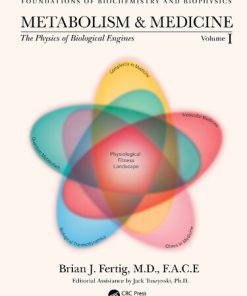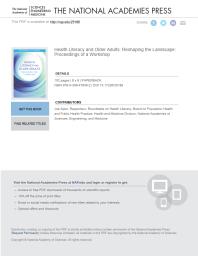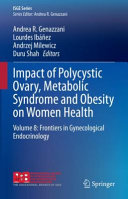Metabolism and Medicine The Metabolic Landscape of Health and Disease Volume 2 1st Edition by Brian 9781000472165 1000472167
$50.00 Original price was: $50.00.$25.00Current price is: $25.00.
Metabolism and Medicine The Metabolic Landscape of Health and Disease Volume 2 1st Edition Brian Fertig Digital Instant Download
Author(s): Brian Fertig
ISBN(s): 9780367699925, 9780367712297, 9781003149897, 0367699923, 0367712296, 1003149898
Edition: 1
File Details: EPUB, 23.74 MB
Year: 2022
Language: English
Metabolism and Medicine The Metabolic Landscape of Health and Disease Volume 2 1st Edition Brian Fertig – Ebook Instant Download/Delivery ISBN(s):9781000472165, 1000472167
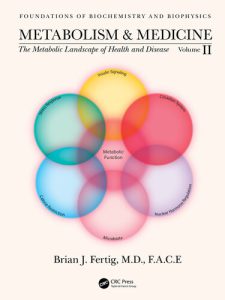
Product details:
- ISBN 10:1000472167
- ISBN 13:9781000472165
- Author: Brian
Metabolism and Medicine
The Metabolic Landscape of Health and Disease (Volume 2)
Chronic disease states of aging should be viewed through the prism of metabolism and biophysical processes at all levels of physiological organization present in the human body. This book connects these insights to what causes them to go awry in the context of unhealthy human behaviors and aging, aiming to buttress scientific creativity. It also provides links between the art and science of medicine that strengthens problem-solving in patient care. New and important discoveries in the area of metabolic health and metabolic diseases are discussed in exquisite detail. Key Features: Broad and up-to-date overview of the field of metabolic aspects of health and chronic disease development, especially connecting the spectrum of topics that range from molecular clocks to stress response to nuclear hormone receptors and the role of microbiota in human health Provides a deeper basic science and interdisciplinary understanding of biological systems that broaden the perspectives and therapeutic problem solving by elaborating on the usefulness of the Physiological Fitness Landscape Describes the importance of insulin resistance in metabolic disease, especially diabetes but also includes links to cancer and Alzheimer’s disease Examines the process of aging from the perspective of metabolic decline illustrating it with the Physiological Fitness Landscape This book, the second volume in a two-volume set, primarily targets an audience of clinical and science students, biomedical researchers and physicians who would benefit from understanding each other’s language.
Table contents:
Personal Statements
1. Introduction to Metabolism: A New Model for Medicine
Abbreviations
1.1 Brief History of Metabolism and the Complex Personalities of the Scientists Who Shaped It
1.2 Opening Remarks
(Biology, Introductory Level)
1.3 Metabolism Fuels Biological Motors and Engines
(Physics, Introductory Level)
(Biology/Biological Chemistry, Clinical Level)
1.4 Metabolic Pathways and Cellular Respiration
(Biological Chemistry, Introductory Level)
1.4.1 Metabolic Modes of Energy Production
(Physics and Quantum Biology Introductory Level)
1.4.2 Metabolic Cycles and Metabolic Rate
(Biological Metabolism and Translational Medicine, Introductory Level)
(Physics Metabolism and Translational Medicine, Introductory/Intermediate Level)
(Biological Chemistry and Translational Medicine,Introductory/Intermediate Level)
1.4.3 Metabolic Rate, Metabolic Efficiency, and Cellular Respiration in Clinical Medicine
(Clinical Biological Physiology/Exercise Physiology, Introductory Level)
1.5 Biological Entropy Production Rate and Aging
(Biophysics, Metabolism, and Physiology, Introductory Level)
1.5.1 Biological Entropy Production Rate and Pharmacological Implications
(Metabolism and Translational Medicine, Introductory Level)
1.6 Key Bioenergetics Concepts
(Basic Concept of Metabolism, Introductory Level)
1.7 Dysfunction in Electron Transport System, Mitochondrial Function, and its Importance in Chronic Disease
(Metabolism and Physiology, Translational Medicine, Introductory Level)
1.7.1 Biochemistry of the Electron Transport System
(Biochemistry, Medium Difficulty)
Basics of the Electron Transport Chain
1.7.2 Biochemical Characteristics of Electron Transport Chain Dysfunction
(Mechanism of ROS Generation Through ETC, Introductory Level)
1.7.3 Clinical Perspective of Electron Transport System Dysfunction
(Mitochondrial Dysfunction, Metabolic Homeostasis, and Onset of Chronic Diseases of Aging, Clinical Level)
1.7.4 Influence of Glucose and Lipid Metabolism on the Function of the Electron Transport System
(Biochemistry, Intermediate Level)
1.7.5 Redox Potential and Its Importance in Biochemical Reactions
1.7.6 Clinical Application and Examples of Redox State to Insulin Resistance and Type 2 Diabetes
1.7.7 Contributions of Macronutrients to Redox Potential, Proton Motive Force, and Oxidative Stress
1.7.8 Elevated Fatty Acid Metabolism and Its Relevance in Aging and Chronic Diseases
1.7.9 Targeting the Electron Transport System for the Treatments of Metabolic Disease
1.7.9.1 Improving Mitochondrial Metabolism
1.7.9.2 Manipulation of Mitochondrial Redox System for Therapeutic Implications: Pharmacologic Intervention
1.7.10 Conclusion
1.8 Ketone Bodies in Metabolism in Health and Disease
(Metabolism and Physiology, Ketones, Introductory Level)
1.8.1 Ketone Bodies are “Super Fuels” and Electron Scavengers
1.8.2 Role of Ketone Bodies in Starvation
(Molecular Biology, Intermediate Level)
1.8.3 Benefits and Dangers of Ketosis in Diabetes
(Molecular Biology, Intermediate Level)
1.8.4 Potential Benefits of Ketosis in Non-Diabetic Diseases
(Biochemistry, Introductory Level)
1.8.5 Yin-Yang Perspectives on Ketone Body Metabolism
(Biochemistry, Intermediate Level)
1.8.6 Conclusions
1.9 Energy Sensors and Fuel Gauges
(Metabolic Physiology and Translational Medicine, Introductory Level)
1.9.1 Energy Sensors, Circadian Biology, and Metabolic Homeostasis
(Metabolic Physiology and Circadian Biology, Translational Medicine, Intermediate Level)
1.9.2 Parameters of Diet and an ETC Mechanistic Model of Human Metabolic Health and Disease
(Circadian Biology and Translational Medicine, Introductory Level)
1.10 The Genesis of Accelerated Aging and Chronic Diseases of Aging
(Clinical Pathophysiology, Introductory Level)
1.10.1 Insulin Resistance, Diet, Peripheral Clocks, and Metabolism
(Metabolism, Circadian Biology, Clinical Physiology, and Pathophysiology, Introductory Level)
1.10.2 Insulin Resistance and Hyperinsulinemia: The Chicken or the Egg?
(Metabolic Physiology, Introductory Level)
1.10.3 The Protective Role of Visceral Adiposity
(Obesity, Translational Medicine)
1.10.4 Loss of or Lipolysis of VAT and Autonomic Dysfunction: An Unrecognized Parameter of Premature Chronic Disease and Mortality
(Obesity, Translational Medicine)
1.10.5 An Anecdote for Current Times: Obesity and SARS-CoV-2 in Pulmonary Fibrosis
1.10.6 Endotoxicosis and Insulin Resistance
1.10.7 Visceral Adiposity at the Intersection of an Inflammatory Diet and Insulin Resistance
(Clinical Metabolism, Translational Medicine)
1.11 Models of Chronic Diseases in Medicine as Metabolic Disorders
(Clinical Metabolism/Translational Medicine)
1.11.1 The Warburg Effect: A Modern Perspective of an Old Hypothesis
1.11.2 An Extension of Brownlee’s Unifying Hypothesis
1.11.3 The Warburg Effect and the Extension of the Unifying Hypothesis: A Broader Unifying Pathobiology
1.12 Concluding Remarks
References
2. The Stress Response: From Health to Disease
Abbreviations
Chapter Overview
2.1 What Is Stress?
2.1.1 The Interdisciplinary Nature of Stress
2.2 The Stress Response
2.2.1 Homeostasis, Allostatic Load, and Allostatic Overload
2.2.2 The Stress Paradox
2.2.2.1 The Impact of Social Networks on the Stress Paradox
2.2.2.2 A Clinical Example of the Stress Paradox
2.2.3 Stress through the Physiological Fitness Landscape
2.2.4 The Effects of Stress on Synchronized Physiology and Metabolism
2.3 A Modern-Day Stress Response Model
2.3.1 The Metabolic Demand of Stress
2.3.2 The Uncertainty Reduction Model
2.4 The Neural Circuitry of Stress
2.4.1 Interconnections
2.4.2 Neuroendocrine Response to Stress and Insulin Resistance
2.4.3 Stress and Norepinephrine
2.4.4 The Neural Circuitry of Uncertainty
2.4.5 Uncertainty and Chronic Anxiety
2.4.6 The Neural Circuitry of Energy Expenditure under Stress
2.5 Motivation and Reward
2.5.1 The Neural Circuitry of Reward
2.5.2 The Reward Circuitry, Stress, and the Uncertainty Model
2.5.3 Gender Differences in Response to Stressors
2.5.4 Possible Interventions for Addictions
2.6 Synaptic Plasticity
2.6.1 Long-Term Potentiation (LTP)
2.6.2 Long-Term Depression (LTD)
2.6.3 Synaptic Plasticity, Will Power, and Consciousness
2.6.4 Quantum Consciousness through the Lens of the Prefrontal Cortex
2.7 Toward Integration of Physical Concepts into Medical Practice
2.7.1 Stress and the Control Parameters
2.7.1.1 The Entanglement of the Stress Response and Biology of Time
2.7.1.2 The Influence of Stress on the Microbiota
2.7.2 The Physiological Fitness Landscape as a Clinically Useful Model
2.7.3 Improving Clinical Practice by Integrating Physical and Chemical Concepts with Biology
2.7.4 Mediators of the Shift from Health to Disease
2.7.5 Implementation of the Physiological Fitness Landscape Model in Clinical Practice
2.8 Take-Home Messages
References
3. Nuclear Hormone Receptors: Mediators of Dynamic (Patho)physiological Responses
Abbreviations
Chapter Overview
3.1 Historical Context
3.2 Introduction
3.2.1 Nuclear Hormone Receptor Structure
3.2.2 Nuclear Hormone Receptor Classifications
3.3 NHRs Sense and Modulate Use of Energy
3.3.1 Nuclear Hormone Receptors in Lipid Homeostasis
3.3.2 NHRs in Glucose Metabolism
3.3.3 NHRs and Redox Homeostasis
3.3.4 NHRs in the Response to Exercise
3.4 Nuclear Hormone Receptors Integrate Environmental Signals in a Timely Manner
3.5 Nuclear Hormone Receptors Are Important Pharmacological Targets with Clinical Applications
3.6 Summary
3.7 Bile Acid Metabolism—A Pivotal Crossroad between Nutrient Signaling and Circadian Networking
References
4. The Biology of Time: How Molecular Clocks Make Living Cells Tick
Abbreviations
Chapter Overview
4.1 Historical Context
4.2 Introduction
4.3 Physical Time, Biological Time, and Physiological Aging
4.3.1 Physical Time Applied to Biology
4.3.2 Biological Time
4.3.3 Measuring Time
4.4 Biological Clocks, Metabolism, and ATP
4.5 Molecular Clocks Keep Biological Time
4.6 Cellular and Organ System Clock Organization
4.6.1 The Suprachiasmatic Nucleus (SCN)
4.6.2 Clock Synchronization: External Cues
4.6.2.1 Light (SCN)
4.6.2.2 Food: Feeding/Fasting Cycles (Liver, Pancreas, Adipose Tissue, Skeletal Muscle)
4.6.3 Exercise, Stress, and Hypoxia
4.6.3.1 Exercise
4.6.3.2 Stress
4.6.3.3 Hypoxia
4.6.4 Phase Shifts
4.7 Hormones Display Circadian Rhythmicity
4.8 Chronobiology and Nuclear Hormone Receptors
4.8.1 Steroid Receptors
4.8.1.1 Glucocorticoid Receptor (GR)
4.8.2 Retinoid X Receptor (RXR) Heterodimeric Receptors
4.8.2.1 Thyroid Hormone Receptor (TR)
4.8.2.2 Farnesoid X Receptor (FXR)
4.8.2.3 Constitutive Androstane Receptor (CAR)-Xenobiotic Metabolism
4.8.3 Lipid Sensors
4.8.3.1 Retinoid-Related Orphan Receptor (RORs)
4.8.3.2 Peroxisome Proliferator-Activated Receptors (PPARs)
4.8.3.3 Peroxisome proliferator-activated receptor gamma coactivator 1-alpha (PGC1α)
4.8.3.4 Rev-erbs: A Family of Nuclear Hormone Receptors
4.8.4 Nuclear Hormone Receptors in Metabolism and as Exercise Mimetics
4.9 Synchrony and Desynchrony of Environmental and Internal Timing: Clocks and Disease States
4.9.1 Metabolism Explained by Scales of Time and Space
4.9.2 Common Causes of Circadian Disruption
4.9.3 Sleep
4.9.4 Circadian Interactions with Nutrient Balance in Health and Disease
4.9.5 Glucose, Insulin, and Metabolic Disease
4.9.6 Cyclical Insulin Resistance and the Role of Forkhead Box O (FOXO) Transcription Factors
4.9.7 Circadian Misalignment of Endogenous Oscillating Cycles Contribute to Metabolic Disease and Chronic Disease of Aging
4.9.8 Nocturnal Eating and Insulin Resistance
4.9.9 Redox Status and Circadian Rhythms
4.9.10 Adrenal Insufficiency
4.9.11 Cortisol, Cushing’s, and Obesity
4.10 Therapeutic Interventions: Fitness Landscape Model
4.11 Future Advances in Circadian Biology and Circadian Medicine
4.12 Take-Home Messages
References
5. Calorie Restriction, Intermittent Fasting, Ketogenic Fasting, and Time-Restricted Feeding
Abbreviations
Chapter Overview
5.1 Philosophical and Mechanistic Perspectives
5.1.1 Physical and Biological Systems
5.1.2 Longevity, Aging, and Chronic Diseases
5.2 Stress Responses to Calorie Restriction
5.2.1 Hormesis, Vitalizing Stress, and Devitalizing Stress
5.2.2 Cell Stress Leading to Allostatic Overload
5.2.3 Metabolic Rate and Take-Over Threshold
5.3 Energy Signals and Metabolic Response
5.3.1 Energy Sensing Functions of AMPK and SIRT1
5.3.1.1 The Role of AMPK in Mitochondrial Biogenesis
5.3.1.2 AMPK, Mitochondrial Function, and Fitness
5.3.1.3 The Role of PGC1α in the Activation of Downstream Transcription Factors
5.3.1.4 The Role of FOXO and Stress Resilience Programs
5.3.1.5 FOXO Transcription Factors and Autophagy
5.3.1.6 FOXO Regulation of Cellular Metabolism
5.3.1.7 The Importance of Circadian Fluctuations in Insulin Signaling and FOXO Activation
5.4 Mechanistic Insights of Insulin Resistance at the Cellular Level
5.4.1 Nodes of Insulin Signaling
5.4.2 The Role of GSK3 in Cell Resistance
5.4.3 The Role of mTOR in Cell Resistance
5.5 Circadian Insulin Signaling
5.5.1 Hormesis and Circadian Insulin Signaling
5.5.2 Circadian Insulin Resistance and Cell Redox Stress Resistance Programs
5.5.3 Transition from Circadian to Chronic Non-Cyclical Insulin Resistance
5.5.3.1 Energy Sensor Responses to Non-Cyclical Insulin Resistance
5.5.3.2 Nocturnal Eating, Overconsumption, and the Development of Metabolic Disease
5.6 Ketone Body Metabolism
5.6.1 Evolutionary Insights into Ketone Body Metabolism
5.6.1.1 Fasting, Ketogenesis, and Cognition
5.6.2 Ketosis—A Danger or a Health Signal?
5.6.3 Approaches to Achieve Ketosis
5.6.3.1 Beta-Hydroxybutyrate Esters as a Metabolic Performance Enhancer for Military Use
5.6.3.2 Beta-Hydroxybutyrate Esters as a Metabolic Performance Enhancer in Athletes
5.6.4 How Long Can Human Health and Survival Endure Fasting?
5.7 Chronic Overnutrition
5.7.1 The Role of Metabolic Flexibility in Insulin Sensitivity
5.7.2 Ectopic Lipid Deposition during Chronic Overnutrition
5.8 Take-Home Messages
References
6. The Microbiota in Symbiotic Entanglement with Human Metabolism
Abbreviations
Chapter Overview
6.1 The Microbiota and Human Liaison: Better Together
6.1.1 Overview and Importance of the Gut Microbiota
6.1.2 The Relationship of the Gut Microbiota and the Human Host
6.1.3 The Microbial Flora: Impacts and Implications of an Altered Microbiota Composition
6.1.3.1 The Microbiota Composition: A Bellwether of Health
6.1.3.2 Microbiota-Mediated Inflammation
6.1.4 Genetics
6.1.5 Epigenetic Systems
6.1.6 The Ecology of the Microbiota and the Supraorganism
6.2 The Supraorganism
6.2.1 Co-Development: From Birth through Life
6.2.2 The Gastrointestinal Tract: Where Microbiota Meets Host
6.2.3 The Microbiota and the Immune System: More Than Just Flagging Good versus Bad
6.2.4 The Nervous System: Two Brains
6.2.5 The Hypothalamic-Pituitary-Adrenal (HPA) Axis: A Lifeline in Times of Need
6.2.6 Impacts on Host Metabolism
6.2.7 Co-Evolution: Commensalism and Beyond
6.3 Control and Order Parameters
6.3.1 Extrinsic Control Parameters
6.3.1.1 Diet
6.3.1.2 Psychogenic Factors
6.3.1.3 Physical Factors
6.3.1.4 Circadian Behaviors
6.3.2 Intrinsic Order Parameters
6.3.2.1 Hypothalamic-Pituitary-Adrenal (HPA) Axis
6.3.2.2 Autonomic Branches of the Central Stress Response
6.3.2.3 Immune Responses
6.3.3 The Microbiota as an Extrinsic Control Parameter and Intrinsic Order Parameter
6.3.4 Extrinsic Control Parameters and Targeted Interventions
6.3.4.1 Stress and The Microbiota
6.3.4.2 Circadian Rhythms: Biological Blueprints for Host and Microbiota Activity
6.3.4.3 Diet: Where It All Begins
6.3.5 Intrinsic Order Parameters through the Lens of the Innate Immune System
6.3.6 Integration of Bottom-Up and Top-Down Order and Control Parameters
6.3.7 New Prospects
References
7. The Role of Insulin Resistance in Metabolic Disease
Abbreviations
Chapter Overview
7.1 Physiological Role of Insulin in Classical Insulin Targeted Tissues
7.2 Insulin Resistance under Healthy and Pathologic Conditions
7.3 Historical Context of Insulin Resistance
7.3.1 History of Syndrome X
7.3.2 Insulin Resistance Has Many Effects on the Body
7.3.3 Spotlight on C. Ronald Kahn and Critical Nodes in the Insulin Signaling Pathway
7.3.4 Spotlight on Gerald Shulman
7.3.5 Spotlight on Philipp Scherer’s Work on Ceramides and Inflammation
7.3.6 Ceramides, Ectopic Lipids, and ROS
7.3.7 Chronic Diseases of Aging as Manifestations of Insulin Resistance
7.4 Foundational Concepts of Insulin Resistance
7.4.1 Insulin Resistance and Metabolic Flexibility
7.4.1.1 Clinical Tools: The Respiratory Quotient
7.4.1.2 Dyssynchronous Insulin Signaling and the Loss of Metabolic Flexibility
7.4.1.3 The Development of Pathogenic Hyperinsulinemia and Insulin Resistance
7.4.1.4 Ectopic Lipid Accumulation and Insulin Resistance
7.4.2 The Role of Free Radicals and Oxidative Stress in Insulin Resistance
7.4.3 Implications of Insulin Resistance across Different Tissues of the Body
7.4.4 The Relationship between Mitochondrial Dysfunction and Insulin Resistance
7.4.5 Control Parameters of Insulin Signaling
7.4.5.1 Insulin Resistance and Alzheimer’s Disease
7.4.5.2 Insulin Resistance and Cardiovascular Disease
7.4.6 The Role of Insulin Signaling Dysregulation in Cancer
7.5 Bioenergetics and the Basis for the Development of Insulin Resistance
7.5.1 Cellular Bioenergetics under Normal Physiological Conditions
7.5.2 The Role of Mitochondria in Cellular Bioenergetics
7.5.3 Mitochondrial Function and Insulin Resistance
7.5.4 Pyruvate Dehydrogenase Enzyme Complex May Be the Key to Fighting Insulin Resistance
7.5.4.1 Role of PDH in Energy Production and Insulin Resistance
7.5.4.2 Yin and Yang of Glyceroneogenesis in Patients with Insulin Resistance
7.6 Insulin Signaling and the Link to Cancer
7.6.1 The Role of Insulin Resistance and Mitochondrial Dysfunction in the Pathogenesis of Cancer
7.6.2 Insulin Signaling, Cancer, and Bioinformatics, Defining Simple Rules
7.7 Accelerated Cognitive Decline, Alzheimer’s Disease, and Insulin Resistance
7.7.1 Effects of Insulin Resistance on Microtubule Dynamics
7.7.2 Impaired Insulin Signaling, Neurofibrillary Tangles, and Amyloid Plaques
7.7.3 Brain Glucose Metabolism and Alzheimer’s Disease
7.7.4 Therapeutic Strategies for Treatment
7.7.5 Bioenergetics, PDK, and Alzheimer’s Disease
7.8 Integrated Systems Biology Approach to Human Health and Disease
7.8.1 Osteocalcin and Insulin Signaling
7.8.2 Adiponectin, Leptin, and Insulin Signaling
7.8.2.1 Leptin and Circadian Insulin Signaling
7.9 Symmetry, Neuroendocrinology, and Insulin Resistance
7.9.1 Order and Control Parameters in Insulin Resistance
7.9.2 Insulin Resistance as a Chronic Control Parameter
7.9.3 Stress as an Allostatic Response: Corticotropin Releasing Hormone and Growth Hormone as Antagonizers of Insulin Action
7.9.4 Prolonged Stress Response Resulting in Allostatic Load
7.9.5 Targeting Upstream Control Parameters to Treat Disease
7.10 Chapter Take-Home Messages
References
8. Mitochondrial Function and Dysfunction and Insulin Resistance
Abbreviations
Chapter Overview
8.1 Mitochondrial Dysfunction and Aging
8.1.1 Air Hunger as a Sign of Mitochondrial Dysfunction
(Clinical, Introductory Level)
8.1.2 Supplements for Mitochondrial Health
(Clinical, Introductory Level)
8.1.2.1 L-Carnitine Transfers Fuel into the Mitochondria
8.1.2.2 B Vitamins Are Essential for Energy Production
8.1.2.3 Alpha-Lipoic Acid and Dihydrolipoate Recharge Other Antioxidants
8.1.2.4 Coenzyme Q10 May Counter Myalgias
8.1.2.5 Vitamin D Promotes Mitochondrial Function Mediated by Both Anti-inflammatory and Insulin Sensitizing Effects
8.1.2.6 Benefits and Dangers of Peroxisome Proliferator-Activated Receptor ɣ Supplementation
8.1.2.7 Dimethyl Fumarate Stimulates Antioxidant Genes
8.1.2.8 Vitamin K Maintains Calcium Homeostasis and Improves Insulin Sensitivity
8.1.2.9 Minerals and Trace Elements
8.2 Linchpin Concepts Connecting Mitochondrial Dysfunction to Chronic Diseases of Aging
8.2.1 Mitochondria: The Bioenergetic Powerhouse of the Cell
8.2.2 Mitochondria: Structure, Function, and Pathophysiology
8.2.2.1 Mitochondrial Function
Role of Mitochondria in Glucose Metabolism
Role of Mitochondria in the Metabolism of Other Organic Molecules
Role of Mitochondria in Redox Homeostasis
8.2.2.2 Influence of Nutrient/Diet on Mitochondrial Function
8.2.3 Intertwined Relationship Between Mitochondrial Dysfunction and Insulin Resistance
8.2.3.1 The Evolution of Insulin Resistance in Insulin-Responsive Metabolic Tissues
8.2.3.2 Overconsumption, Mitochondrial Dysfunction, and Insulin Resistance
8.2.3.3 Circadian Disturbances, Insulin Resistance, and Mitochondrial Dysfunction
8.2.4 Metabolism of Macronutrient Substrates and Insulin Resistance
8.2.4.1 Cellular Lipid Deposition, Mitochondrial Dysfunction, and Insulin Resistance
8.2.4.2 Role of Intracellular Fatty Acid Metabolites in Insulin Resistance
8.2.4.3 Fatty Acid Metabolism, Mitochondrial Function, and Insulin Resistance
8.2.4.4 Influence of Timing and Fuel Selection on Metabolic Flexibility and Mitochondrial Function
8.2.4.5 Is Mitochondrial Dysfunction a Cause or Consequence of Insulin Resistance?
8.2.5 Future Perspectives
8.3 Chapter Take-Home Messages
References
9. Chronic Diseases of Aging as Metabolic Disorders
Abbreviations
Chapter Overview
9.1 The Role of Metabolism in the Chronic Diseases of Aging
9.1.1 The Relationship of Mitochondrial Dysfunction and Insulin Signaling in Metabolic and Chronic Diseases of Aging
9.1.1.1 The Interdependent Relationship of Obesity, Inflammation, and Insulin Signaling in Cancer
9.1.1.2 Quest for the Truth
9.2 Cancer as a Metabolic Disease?
9.2.1 Obesity and Cancer
9.2.2 Insulin Signaling and the Warburg Effect
9.2.3 Oncogenic Signaling and the Warburg Effect
9.2.4 Anaplerosis: Connecting the Warburg Effect and Mitochondrial Function in Proliferating Cells
9.2.5 Targeting Carbohydrate Metabolism for Cancer Therapy
9.2.6 Targeting Amino Acid Metabolism in Tumorigenesis
9.2.7 Targeting Lipid Metabolism in Tumors
Targeting Cholesterol Metabolism
Targeting Fatty Acid Metabolism
9.2.8 Targeting Whole-Body Metabolism (Systemic) for Cancer Management
Fasting
Ketogenic Diets
Caloric Restriction
The Microbiome and Cancer Treatment
9.2.9 Repurposing Metabolism-Related Drugs to Fight Cancer
Metformin
Non-Steroidal Anti-Inflammatory Drugs (NSAIDs)
9.2.10 Conclusion and Future Perspectives
9.3 Alzheimer’s Disease: Another Chronic Metabolic Disease
9.3.1 Amyloid Beta and Synaptic Dysfunction
9.3.2 The Shared Pathogenesis of Insulin Resistance and Alzheimer’s Disease
9.3.2.1 Dyslipidemia
9.3.3 The Role of Amylin in Amyloid Beta Accumulation
9.3.4 Alzheimer’s Disease and the Reverse Warburg Effect
9.3.5 Insulin Resistance, Mitochondrial Dysfunction, and Oxidative Stress in Alzheimer’s Disease
9.3.6 The Brain’s High Energy Requirements Make It Susceptible to Mitochondrial Dysfunction
9.3.7 Insulin Resistance and Cognitive Decline
9.3.8 Molecular and Genetic Contributors to Alzheimer’s Disease Pathology
9.3.8.1 The GSK3 Hypothesis of Alzheimer’s Disease
9.3.9 Pharmacologic Therapies for Alzheimer’s Disease
9.4 Metabolic Cardiomyopathy
9.4.1 An Overview
9.4.2 Physiological Cardiac Hypertrophy
9.4.3 Pathological Cardiac Hypertrophy
9.4.3.1 Diabetic and Metabolic Cardiomyopathy
9.4.4 Non-ischemic Dilated Cardiomyopathy
9.4.5 Ischemic Dilated Cardiomyopathy
9.4.6 Vascular Atherosclerosis
9.4.6.1 Lipoproteins, Cholesterol, and Vascular Atherosclerosis
9.4.6.2 Current Therapies
9.4.6.3 Prospective of New Therapies
9.4.7 Metabolic Pharmacotherapy of Heart Disease
9.4.7.1 Metformin
9.4.7.2 Fibrates, TZDs, and Vitamin D
9.4.7.3 Trimetazidine
9.5 The Physiological Fitness Landscape: A New Model of Personalized Precision Medicine
9.6 Summary
9.7 Take-Home Messages
References
Epilogue
Index
People also search:
metabolism and medicine the metabolic landscape
metabolism and metabolites
metabolism and metabolic pathways
metabolism and the endocrine system
metabolism and medicine
You may also like…
Sale!
Medicine - Oncology
Drug Metabolism Handbook Concepts and Applications in Cancer Research Volume 1 2 Ala F. Nassar
Sale!
Biology and other natural sciences - Human Biology
Sale!
Relationships & Lifestyle - Health - Diseases & Disorders
Sale!
Medicine - Health-Related Professions
Sale!
Medicine - Molecular Medicine
Sale!
Medicine - Others
Metabolism and Medicine: Volume 1 The Physics of Biological Engines Brian J. Fertig
Sale!
Sale!
Sale!

